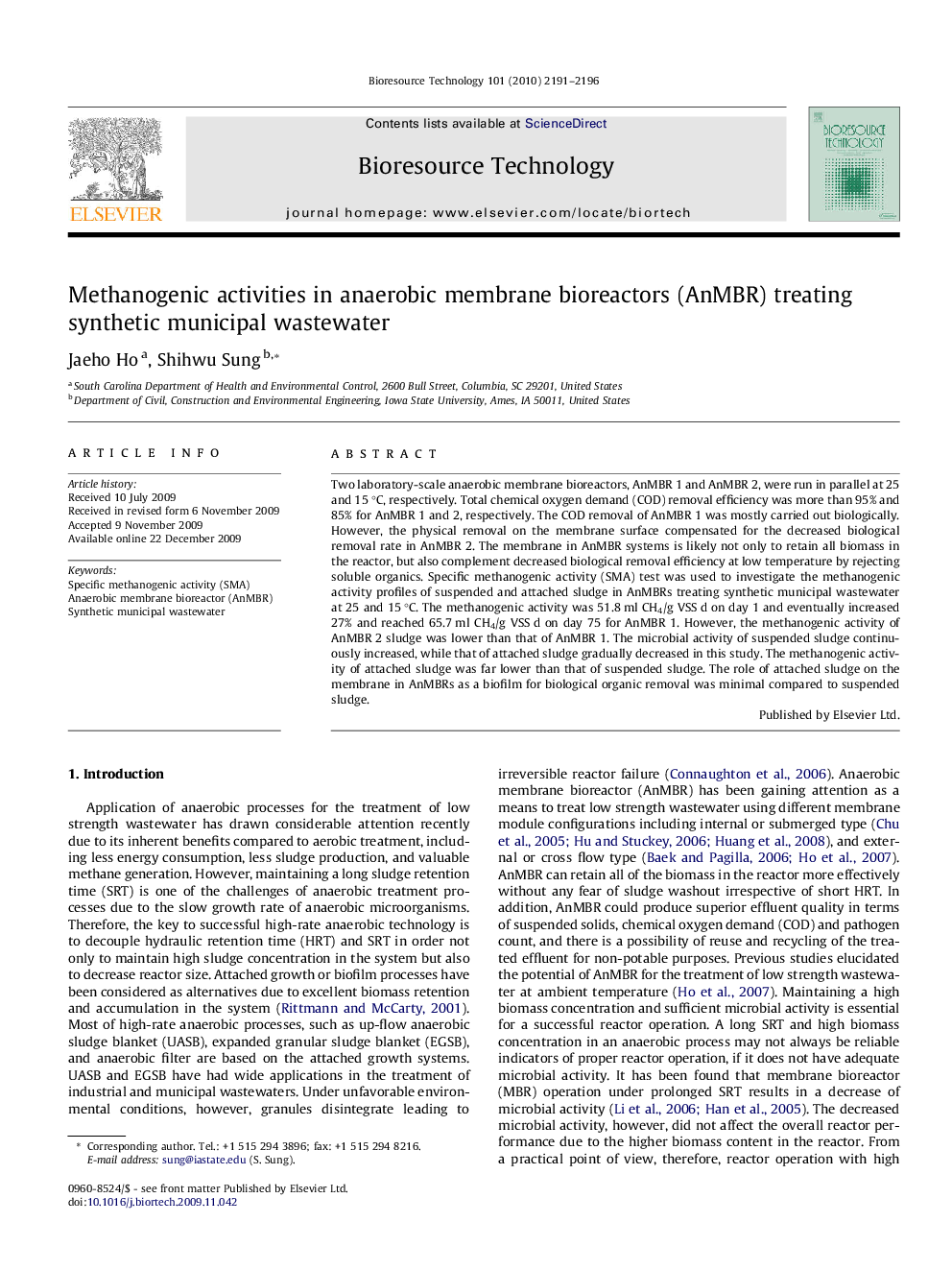| Article ID | Journal | Published Year | Pages | File Type |
|---|---|---|---|---|
| 683844 | Bioresource Technology | 2010 | 6 Pages |
Two laboratory-scale anaerobic membrane bioreactors, AnMBR 1 and AnMBR 2, were run in parallel at 25 and 15 °C, respectively. Total chemical oxygen demand (COD) removal efficiency was more than 95% and 85% for AnMBR 1 and 2, respectively. The COD removal of AnMBR 1 was mostly carried out biologically. However, the physical removal on the membrane surface compensated for the decreased biological removal rate in AnMBR 2. The membrane in AnMBR systems is likely not only to retain all biomass in the reactor, but also complement decreased biological removal efficiency at low temperature by rejecting soluble organics. Specific methanogenic activity (SMA) test was used to investigate the methanogenic activity profiles of suspended and attached sludge in AnMBRs treating synthetic municipal wastewater at 25 and 15 °C. The methanogenic activity was 51.8 ml CH4/g VSS d on day 1 and eventually increased 27% and reached 65.7 ml CH4/g VSS d on day 75 for AnMBR 1. However, the methanogenic activity of AnMBR 2 sludge was lower than that of AnMBR 1. The microbial activity of suspended sludge continuously increased, while that of attached sludge gradually decreased in this study. The methanogenic activity of attached sludge was far lower than that of suspended sludge. The role of attached sludge on the membrane in AnMBRs as a biofilm for biological organic removal was minimal compared to suspended sludge.
